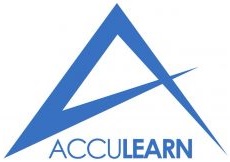Introduction
- Is your equipment (fixed or mobile) failing before planned replacement?
- Are you unable to execute maintenance tasks because spare parts are not available?
- Have you made significant investment in CBM methods and tools but struggle to realize the benefit?
- Do you have lots of data from oil analyses but still struggling to accurately predict your equipment breakdowns?
- Do you know how to determine optimum asset life?
- Are you struggling to justify the economics of asset replacement?
- Are you having difficulties in deciding whether to rebuild or replace your equipment to minimize the life cycle costs?
- Do you need to optimize your emergency spare requirements?
If you answer YES to any of the above questions, this course is for you.
Objectives
The objectives of the program can be summarized as follows:
- To focus on the techniques of optimization – the single most important thrust of this learning program. Whether the decision is about work-crew sizes, or the replacement of component-parts or entire equipment units, the concept of making the very best, most optimal, decision will be the principal concern of the training program.
- The concept of making the very best, most optimal, decision will be the principal concern of the training program.
- To equip the participating maintenance managers, planners and schedulers and engineers with the know-how to select the most appropriate analytical tools for their maintenance decision-making.
- Reflecting the growing focus of industrial safety and the profusion of safety-related litigation – think of transportation accidents, chemical spills, and mining disasters – the program will show how safety objectives relate to the optimization models, and will underline the advantages of having a well-documented and rigorously-executed program of maintenance and replacement.
- To introduce the critical decision-making topics that can make a significant difference to the in-service time of equipment, to the costs related to doing maintenance too often or too seldom, and the optimization of asset utilization.
- To not only cover the classic need-to-know material in the area, but to acquaint the participants with leading-edge and on-the-horizon approaches that they will encounter in the near future.
The Contents
Day 1 – Physical Asset Management & Reliability Concepts
From Maintenance Management to Physical Asset Management
- Challenges of physical asset management
- The maintenance excellence pyramid
- Total Productive Maintenance
- Reliability Centered Maintenance
- Optimizing Maintenance & Replacement Decisions
Reliability Improvement through Preventive Maintenance
- Analysis of Component Failure Data
- Probability Density Function
- Reliability Function
- Weibull Density
- Infant Mortality
- Bath-Tub Curve
Exercise in Analysing Component Failure Data Using the Weibull Distribution
- Estimating the Weibull Parameters
- Using Median Rank Tables
Dealing with Censored Data, the 3-Parameter Weibull, and the Kolomorgov-Smirnov Test
- Upper-End Censoring, Multiply Censored Group Data
- Estimating the Location Parameter in the Weibull Distribution
- Checking the Goodness-of-Fit of the Distribution
Day 2 – Preventive Maintenance & Spare Parts Replacements
Reliability Improvement through Preventive Maintenance(continued)
- Component Replacement Procedures including Glasser’s Graph
- Block Replacement Policies
- Age-Based Replacement Policy
- Setting Policies based on Safety Constraints, Cost-Minimization and Availability-Maximization
- Repairable systems
Case Studies in Component Preventive Replacement
- Including boiler plant, bearings, pumps, sugar feeds, compressor valves, and centrifuges
Spare parts provisioning
- Fast moving spares
- Emergency (insurance) spares
Case studies in spares provisioning
- Including line replaceable units (LRUs), cylinder heads, repairable conveyor electric motors and utility transformers
Group and individual exercises
Clinic: Hands-On Use of PC Software for Preventive Replacement Strategies
- Participants will solve pre-set problems
Day 3 – Machine Health Monitoring & Inspection
Reliability Improvement through Inspection
Inspection Frequency and Depth for equipment in continuous operation
- Inspection Intervals to Maximize Profit
- Maximizing Equipment Availability
- Inspection Intervals for Equipment Used in Emergency Situations (e.g. protective devices)
- Case studies including oil and gas field equipment such as pressure safely valves (for protective devices)
Health-Monitoring Procedures
- Proportional Hazards Modelling
- Spectroscopic Oil Analysis Programs
- Optimization of Condition-Based Maintenance Procedures
- Role of software for CBM optimization
- Case studies including food procession industry (vibration monitoring), pulp and paper and shipping equipment such as compressors (vibration monitoring) and diesel engines (oil analysis), turbines in an electrical generating station (pressure measurements)
Day 4 – Economics of Reliability
Reliability Improvement through Asset Replacement
Aspects of Discounted Cash Flow Used in Capital Equipment Replacement Analysis
- Estimating the Interest Rate Appropriate for discounting
- Present-Value Calculations
- The effects of Inflation in the Analysis
- Calculating the Equivalent Annual Cost (EAC)
Economic Life of Capital Equipment
- The “Classic” Economic Life Model
- Before-and-After Tax Calculations
- The Repair-vs-Replace Decision
- Life-Cycle Costing
- Technological Improvement
Group and individual exercises
Clinic: Hands-On Use of PC Software for Capital Equipment Replacement Analysis
- Participants will solve pre-set problems
Day 5 – Effective Management of Maintenance Resources & Information
Effective Use of Maintenance Resources
Organizational Structure, Crew Sizes, Workshop Resource Requirements
- Balancing Maintenance Costs against Plant Reliability
- Establishing the optimal number of machines to have in a workshop
- Resource Requirements Using Queuing Theory and Simulation
- Utilization of Outside Resources
- Lease-vs.-Buy Decision
Case studies including balancing maintenance cost and reliability in an electrical generating station, establishing optimal mix of machines to have in a steel mill maintenance workshop, establishing shift patterns and maintenance crew sizes in a petrochemical plant.
Maintenance Management Information Systems
- Methodology for Auditing a CMMS



